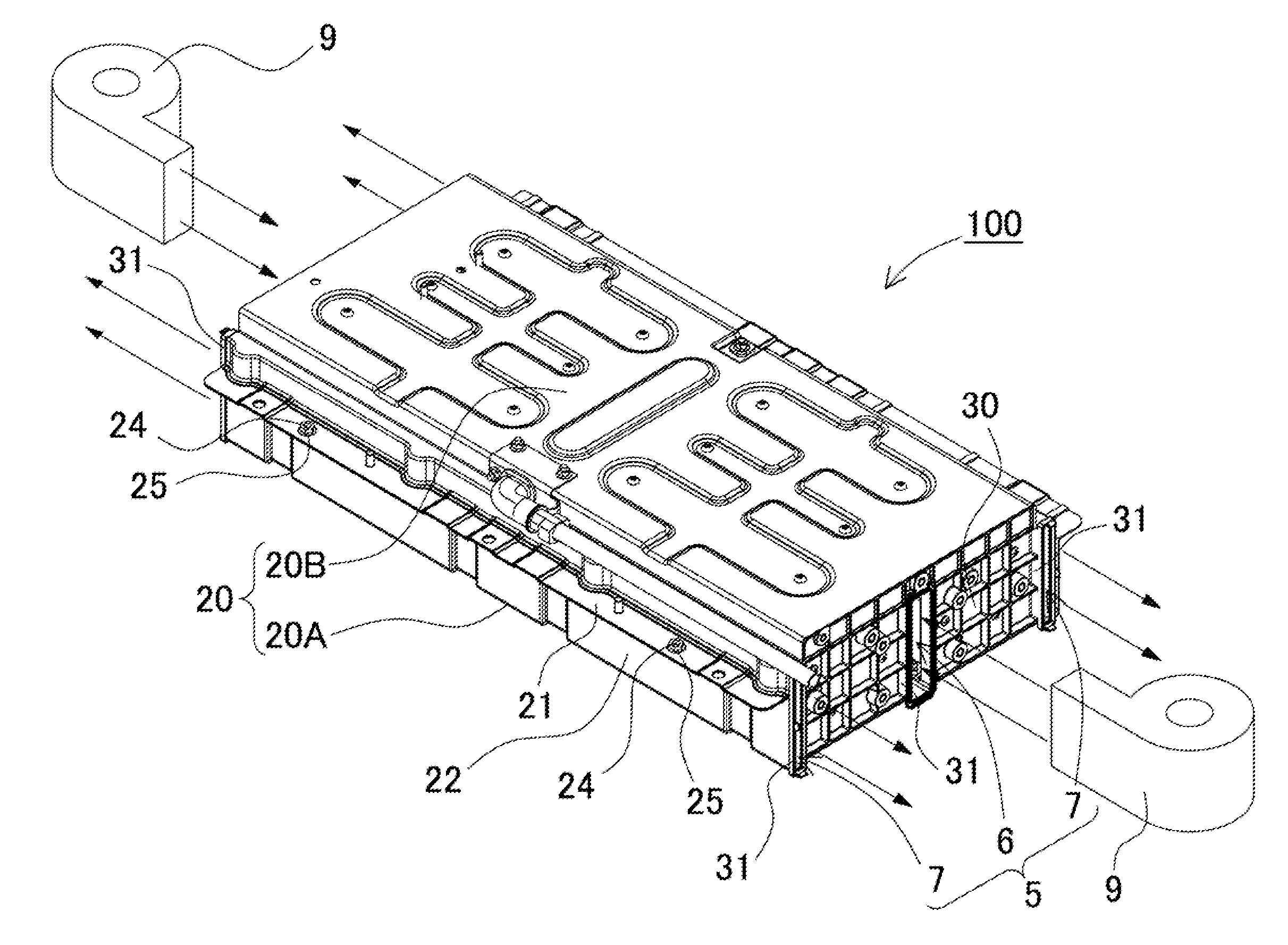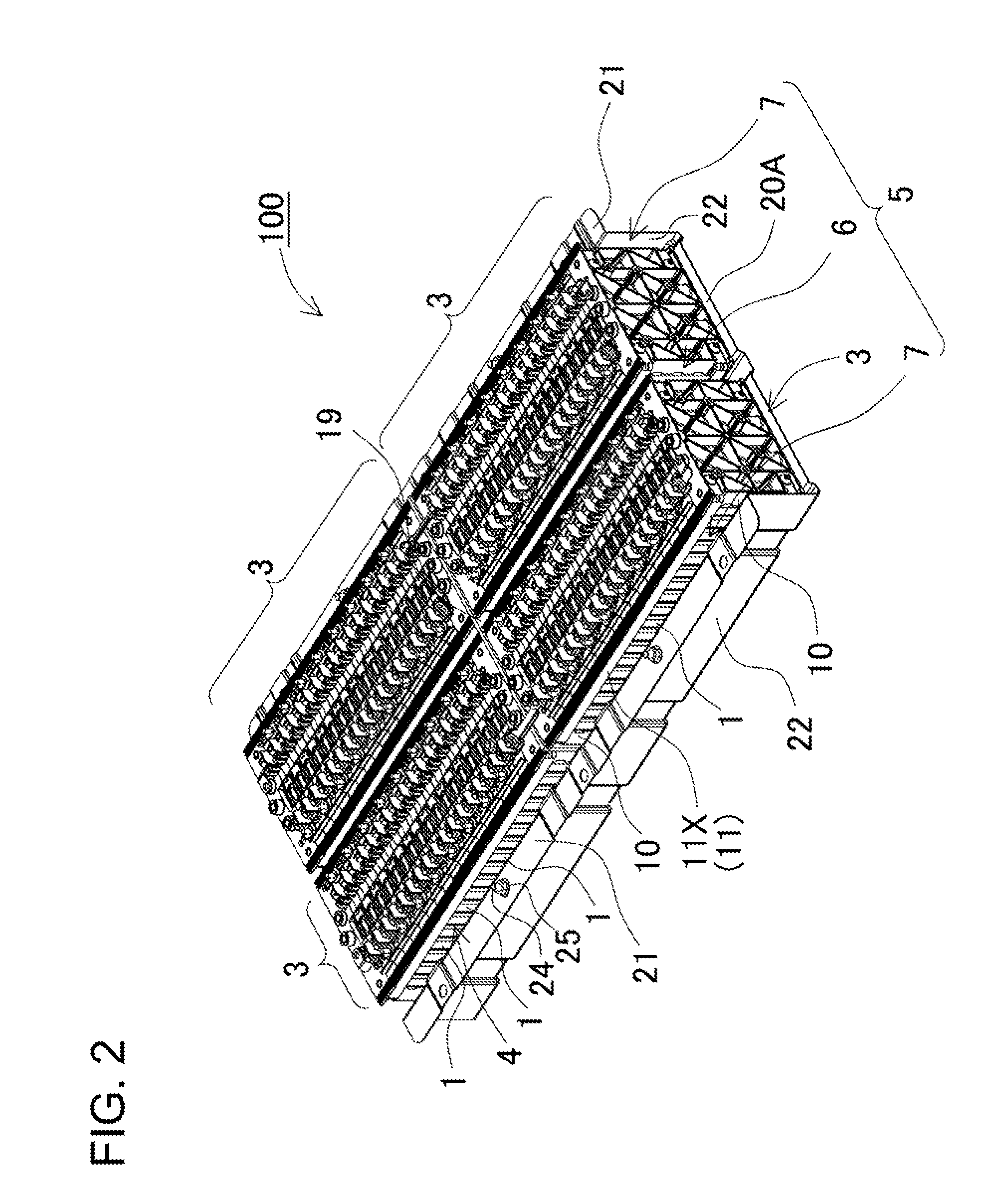Power supply device including a plurality of battery cells arranged side by side
a power supply device and battery cell technology, applied in the direction of cell components, final product manufacturing, sustainable manufacturing/processing, etc., can solve the problems of uneven remaining capacity of battery cells, deterioration of battery cells, and difficulty in cooling all battery cells to even temperatures, so as to improve mechanical coupling force of end plates, improve cooling performance, and improve cooling performance
- Summary
- Abstract
- Description
- Claims
- Application Information
AI Technical Summary
Benefits of technology
Problems solved by technology
Method used
Image
Examples
examples
[0093]As stated above, cooling gas flows through the cooling gaps so that the battery cells are cooled, while the cooling effect is suppressed by the thermally-insulating layers in the battery cells on the end sides. Thus, the cooling performance difference is reduced. Therefore, it is possible to bring the temperatures of the battery cells closer to the same temperature. In addition, in the case where the aforementioned temperature equalizing walls and temperature equalizing plates are combined with the end spacers, it is possible to further even the temperatures of the battery cells.
[0094]The aforementioned power supply devices can be used as a battery system for vehicles. The power supply device can be installed on electric vehicles such as hybrid cars that are driven by both an engine and a motor, and electric vehicles that are driven only by a motor. The power supply device can be used as a power supply device for these types of vehicles.
[0095]FIG. 23 is a block diagram showing...
PUM
| Property | Measurement | Unit |
|---|---|---|
| temperature | aaaaa | aaaaa |
| temperature | aaaaa | aaaaa |
| temperature | aaaaa | aaaaa |
Abstract
Description
Claims
Application Information
 Login to View More
Login to View More - R&D
- Intellectual Property
- Life Sciences
- Materials
- Tech Scout
- Unparalleled Data Quality
- Higher Quality Content
- 60% Fewer Hallucinations
Browse by: Latest US Patents, China's latest patents, Technical Efficacy Thesaurus, Application Domain, Technology Topic, Popular Technical Reports.
© 2025 PatSnap. All rights reserved.Legal|Privacy policy|Modern Slavery Act Transparency Statement|Sitemap|About US| Contact US: help@patsnap.com



